Check out my non-spicy vegan vegetable bibimbap recipe, which has nutritious spring veggies and a special soy sauce-based Japanese-style bibimbap sauce. This is great for a quick lunch or for putting in your lunch box.
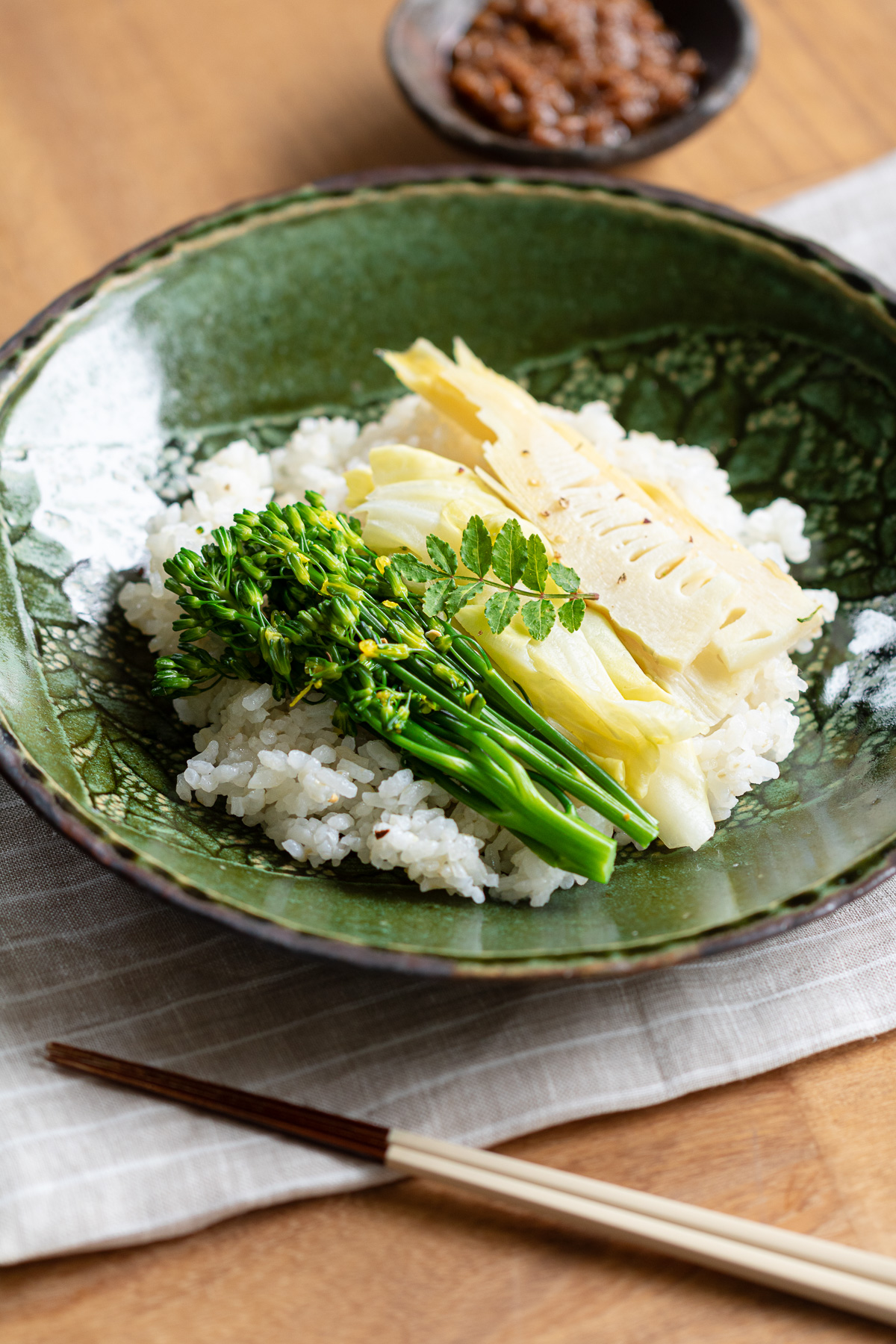
This is a simple bibimbap recipe made with simply boiled spring veggies.
Unlike bibimbap, which requires the preparation of Namul(vegetables seasoned with sesame oil, soy sauce, salt, etc.), this dish is quick and easy to make. It's an excellent choice for lunch when you want something quick and uncomplicated.
The sauce is what makes this vegan vegetable bibimbap so tasty. We add Sansho (Japanese pepper) to our special soy sauce to give it a delicate spring flavor.
With the unpredictable spring weather, let's revive our bodies and spirits with some tasty bibimbap made with a variety of nutritious spring vegetables🌱
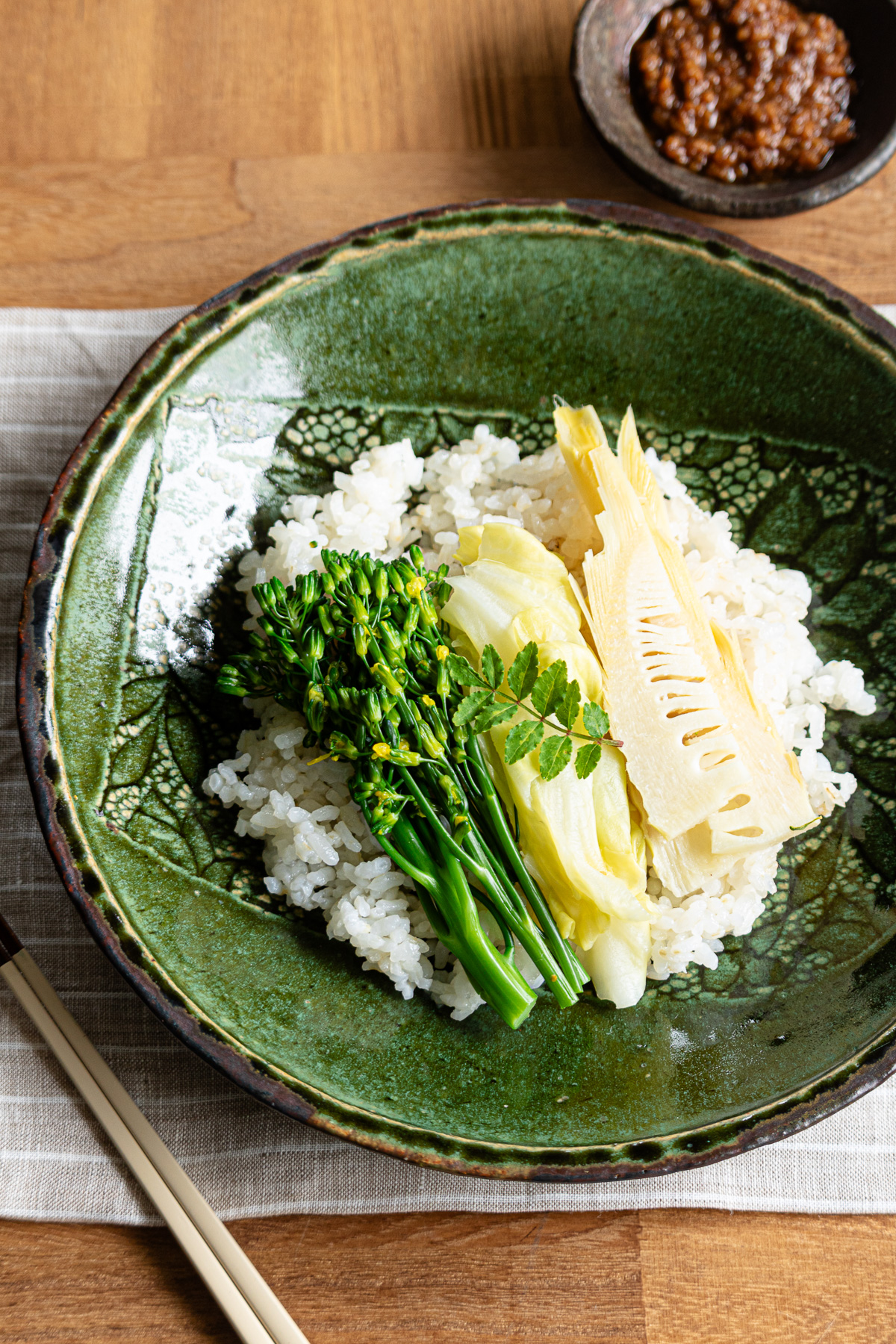
Also, just so you know, all the recipes on this blog are vegan and vegetarian. It's also great for anyone interested in a plant-based diet. If you've got some extra time, be sure to check out the other pages!
If you're looking for a gochujang-based bibimbap recipe, you should definitely check out our vegan bibimbap recipe. It's topped with seasoned soybeans in a Korean-style bulgogi sauce for an awesome protein boost. The special gochujang sauce we use is mild and not too spicy. This makes it a dish the whole family can enjoy together. Please try it out as well🫰
Ingredients
Please prepare your favorite spring vegetables that are currently available. There is no particular requirement that they must be these, so it's best to get what's in season locally. Here's an example of the spring vegetables I used.

Spring Vegetables
- Broccoli: I used broccoli that has yellow flowers just starting to bloom. The subtle yellow color adds a spring-like feeling to the whole dish. Depending on how thick the stems are, we suggest boiling them for about a minute and a half to keep the texture and nutrients.
- Boiled bamboo shoots: I used bamboo shoots that had been boiled in rice water to get rid of the bitterness, and I sliced them into nice, thick slices. I'm a big fan of freshly boiled young bamboo shoots, they're delicious just sliced into thin slices and served with soy sauce as veggie sashimi. If you have grated wasabi, excellent!
- Cabbage: I liked to blanch them briefly in hot water for 10 to 30 seconds. If you boil it too long, the cabbage will become mushy. Remove from the water as soon as the cabbage has lost some of its firmness and drain well or use paper towels to remove excess water.
- Sansho (prickly ash) leaves: I use them not only for decoration, but also for flavor. It's not a must-have ingredient, as the ground sansho berries are also added to the special Japanese-style bibimbap sauce. This year, I bought a sansho plant at a hardware store in Japan for about 300 yen. You can use it for both Japanese and Chinese food. The aroma will definitely take your dishes to the next level.
Other Ingredients
- Rice: Freshly cooked rice is twice as delicious.
- Nori: Add as much as you like.
- Special soy sauce-based Japanese-style bibimbap sauce: Mix together the homemade soy sauce koji (check out the recipe here), ground sesame seeds, and sesame oil. Then, grind the sansho (Japanese pepper) with a mill to give it a nice, rich aroma. If you're not into the sansho, no worries! You can always skip it. Since it's made with soy sauce koji, which gives it a subtle sweetness, it's way more palatable than gochujang-based bibimbap sauce, which has spicy kick. Even kids and those who don't like spicy food can enjoy this dish✌️
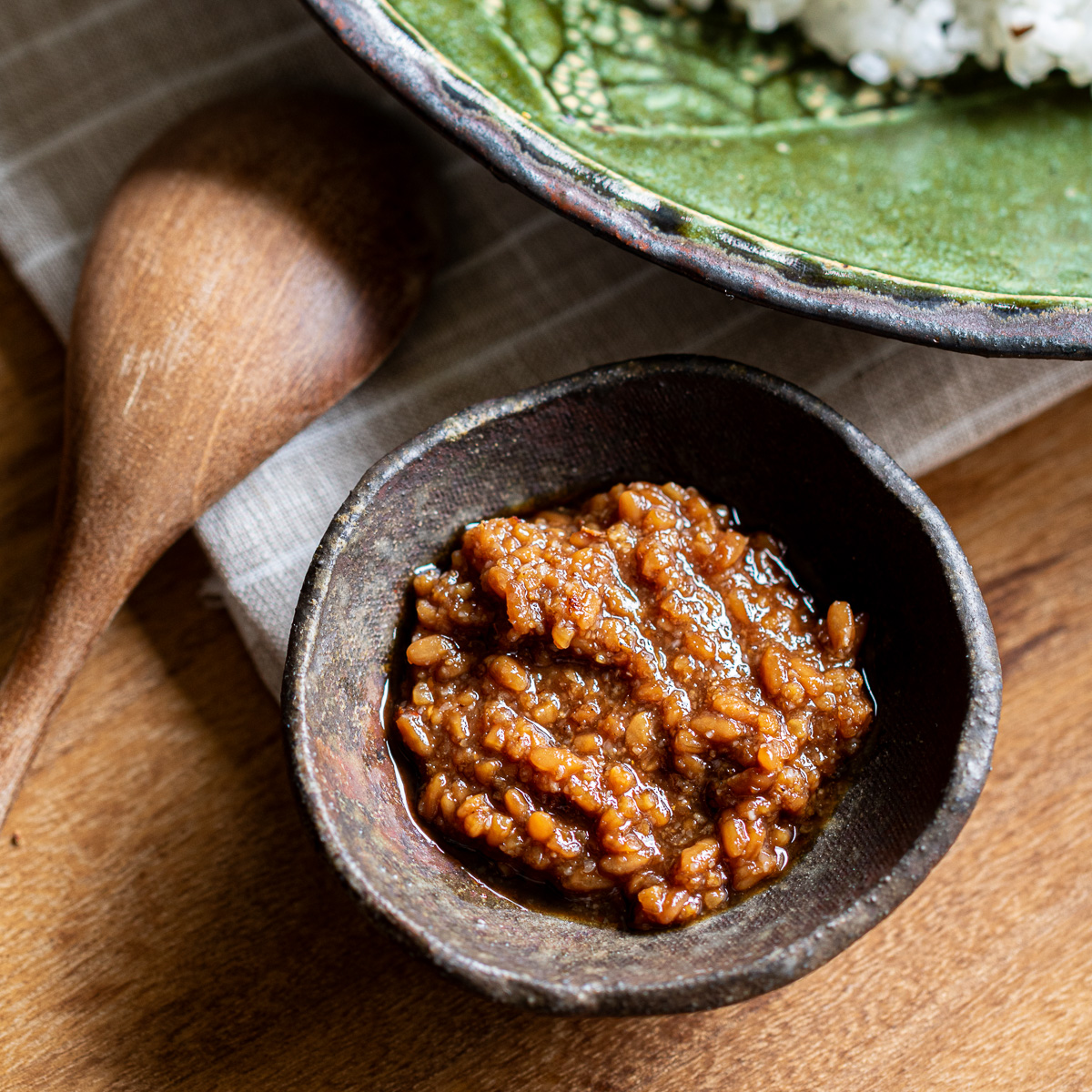
For exact amounts, please check the printable recipe card👇
Instructions
Bibimbap means "mixed rice" in Korean. Try to make the most delicious vegetable bibimbap by arranging the ingredients and quantities of veggies to your own taste!
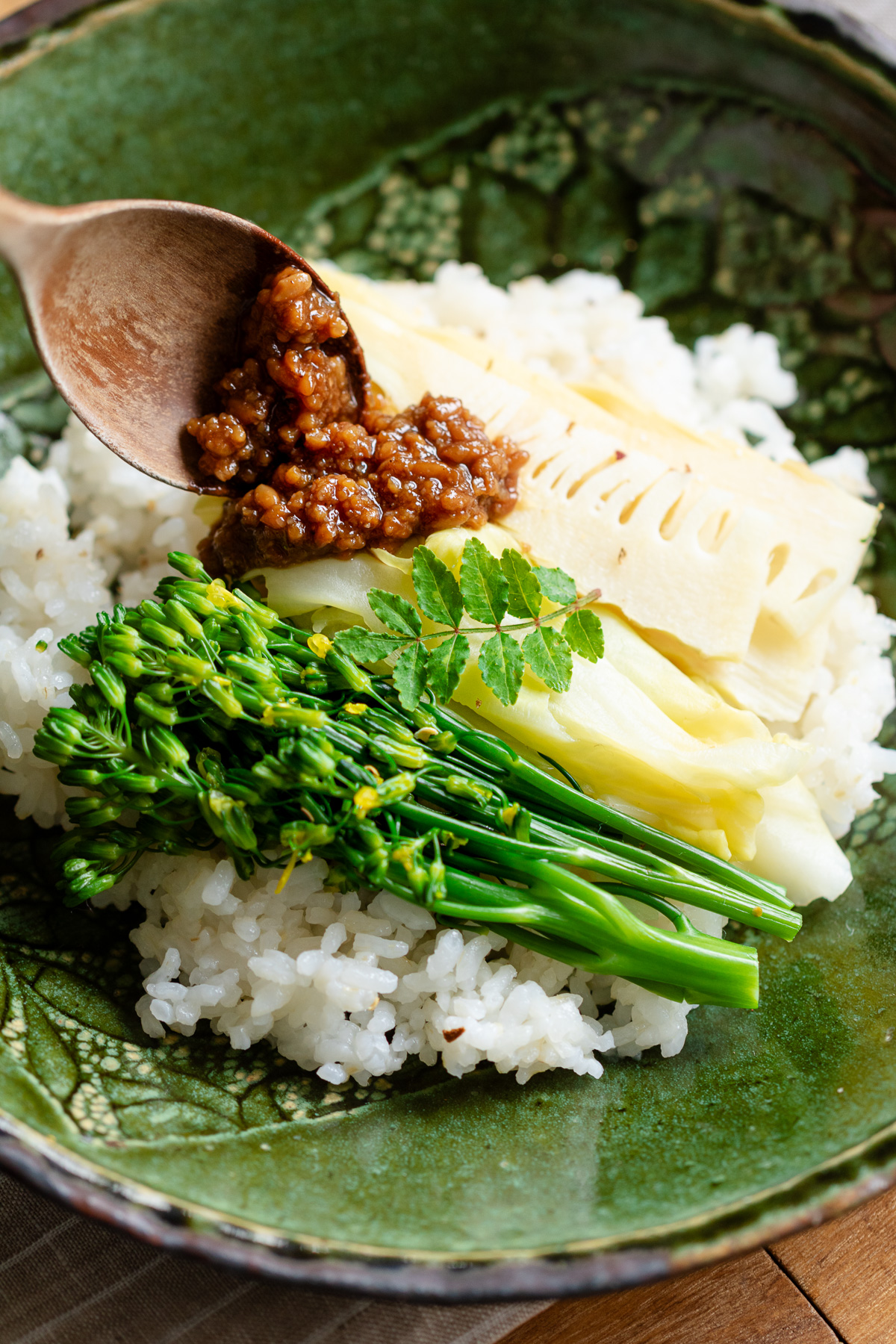
- Plate: First, put the boiled spring vegetables on top of the rice. Then, add the special Japanese-style bibimbap sauce.
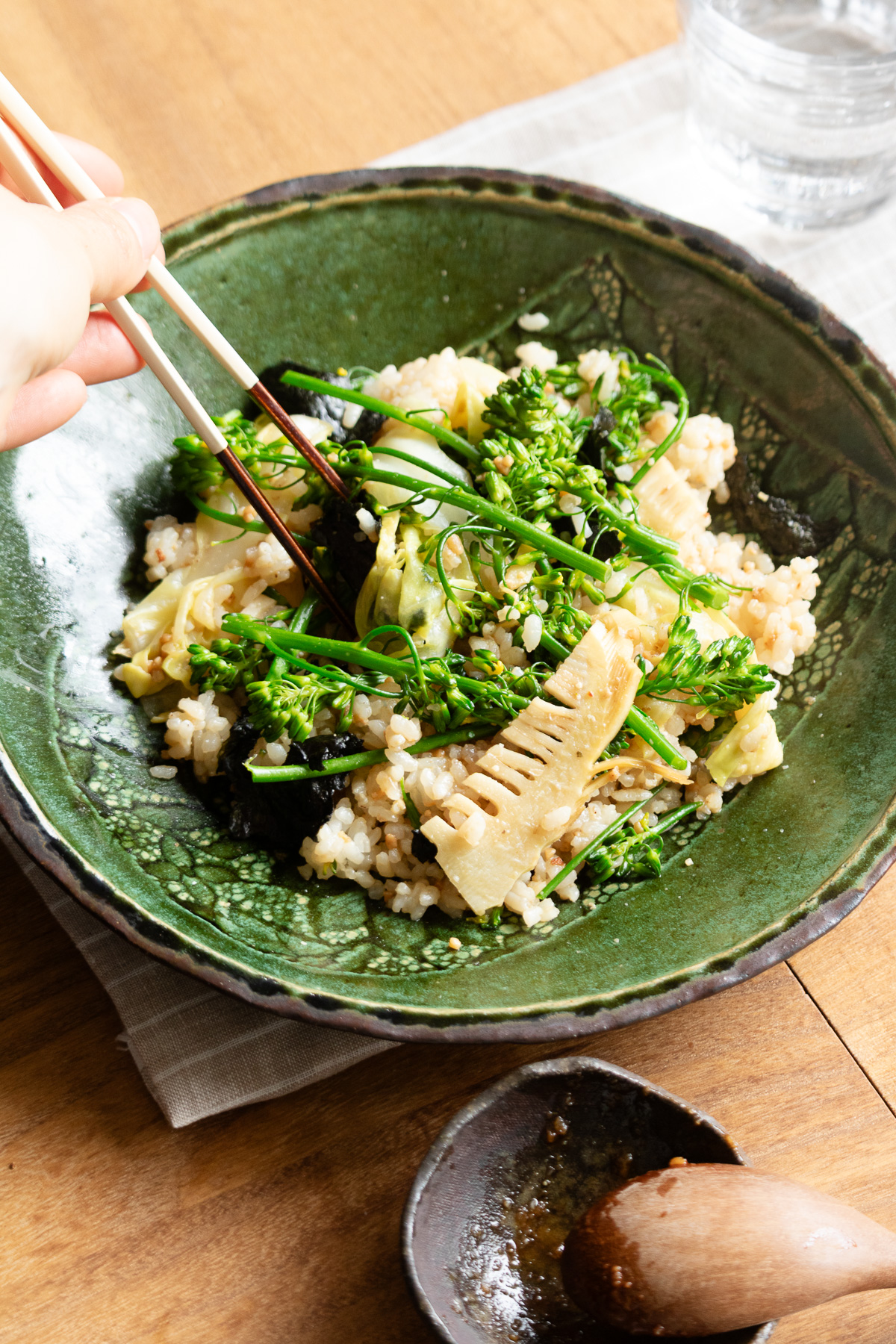
- Mix: Go ahead and add seaweed to suit your taste, and give it a good mix! The better you mix it, the better the sauce will be mixed in and the tastier it will be. Just remember to serve it before the rice gets cold!
🌿 If you want, you can sprinkle ground sansho peppercorns on top at the end for extra aroma.
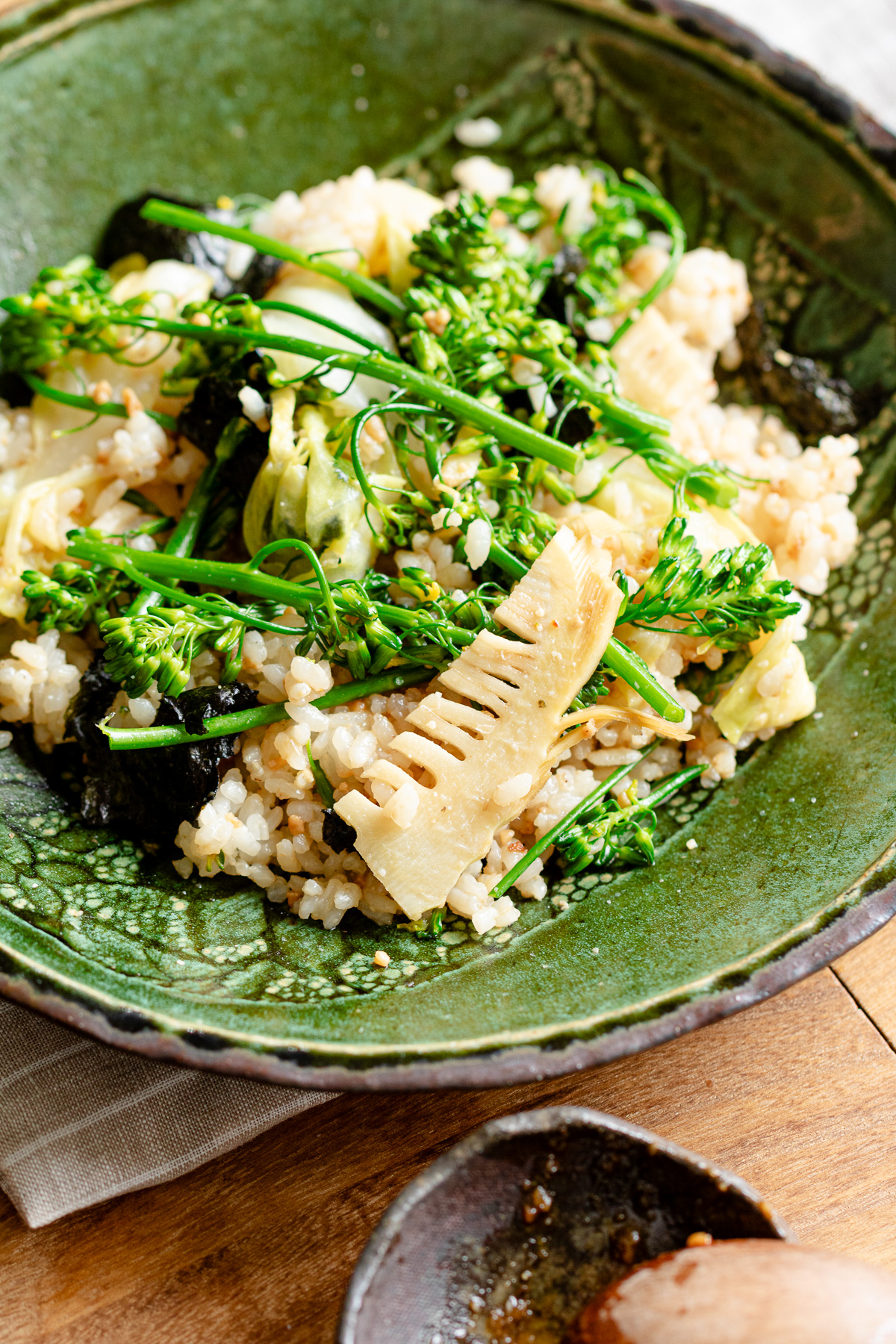
Tools
- cooking chopsticks
- pot
- colander
- kitchen knife
- cutting board
Storage
Rice becomes brittle in the fridge, so it's best to keep only cooked vegetables in the fridge. If you like, you can prepare the vegetables the day before and store them. The next day, just cook the rice and add the vegetables, and you can eat it any time of the day or pack it as a lunch. It's great for those hectic mornings too!
Questions
Yes, my advice is to pick as many of the tender young shoots as possible.
More Recipes with Soy Sauce Koji
Vegan recipes using soy sauce koji:
Recipes with Sansho
To enjoy the aroma of sansho:
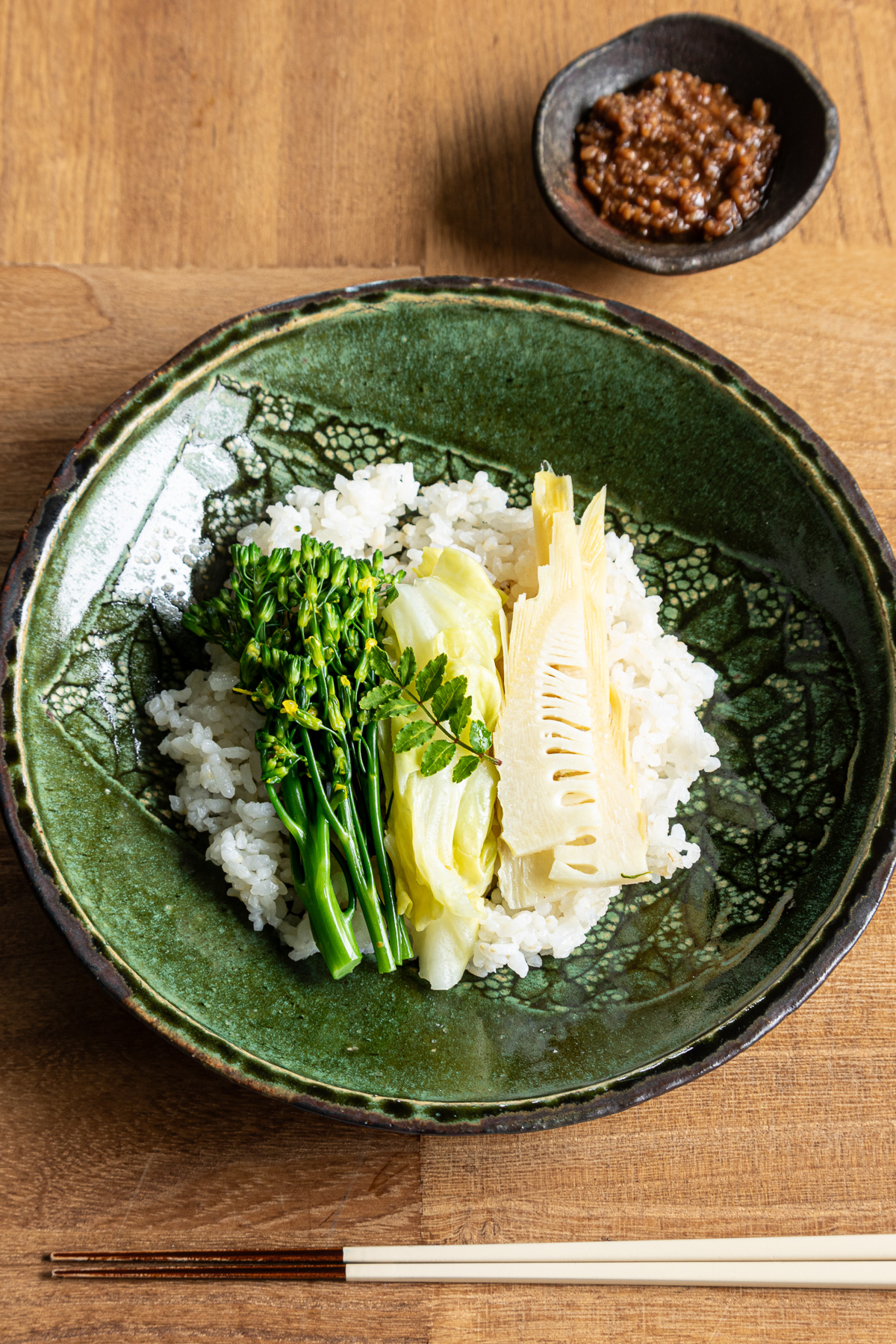
Recipe Card
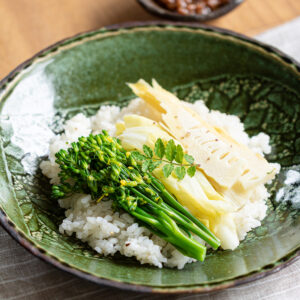
Fresh Spring Vegetables Bibimbap with Japanese-Style Sauce
Equipment
- cooking chopsticks
- pot
- colander
- kitchen knife
- cutting board
Ingredients
- broccoli (appropriate amount)
- boiled bamboo shoots (appropriate amount)
- cabbage (appropriate amount)
- sansho leaf (appropriate amount)
- 1 bowl cooked rice
- 1 sheet nori
Special soy sauce-based Japanese-style bibimbap sauce
- 1 tbs soy sauce koji
- 1 teaspoon ground sesame seeds
- ½ teaspoon toasted (dark) sesame oil
- sansho (ground / to taste)
Instructions
Preparation
- Cut the broccoli into bite-sized pieces and cook in boiling water for 1 to 1.5 minutes, then drain in a colander.broccoli
- Blanch cabbage in boiling water for 10-30 seconds. Drain well and cut into bite-sized pieces.cabbage
- Slice boiled bamboo shoots to desired thickness.boiled bamboo shoots
- Combine the ingredients for the special soy sauce koji bibimbap sauce in a bowl and mix well.1 tbs soy sauce koji1 teaspoon ground sesame seeds½ teaspoon toasted (dark) sesame oilsansho
Plating
- Arrange the warm rice on plates, garnish with the prepared spring vegetables and sansho leaves, and sprinkle with ground sansho berries if desired.sansho leaf1 bowl cooked rice
- Top with as much of the special Japanese soy sauce as you like. Add nori seaweed to taste and mix well.1 sheet nori
How was the recipe for "Spring Vegetable Bibimbap"?
If you liked the recipe, you can also try our vegan pasta dish with spring rape blossoms in Shio Koji Peperoncino. If rape blossoms are not available, you can add cabbage or broccoli instead. The umami of Shio Koji will enhance the flavor of the peperoncino.
If you're into sansho flavor, you should definitely try my soybean hummus recipe. You can use it as a dip, a sandwich spread, or even as a base for Shiraae(Japanese mixed vegetable salad).
Please give it a go🕊




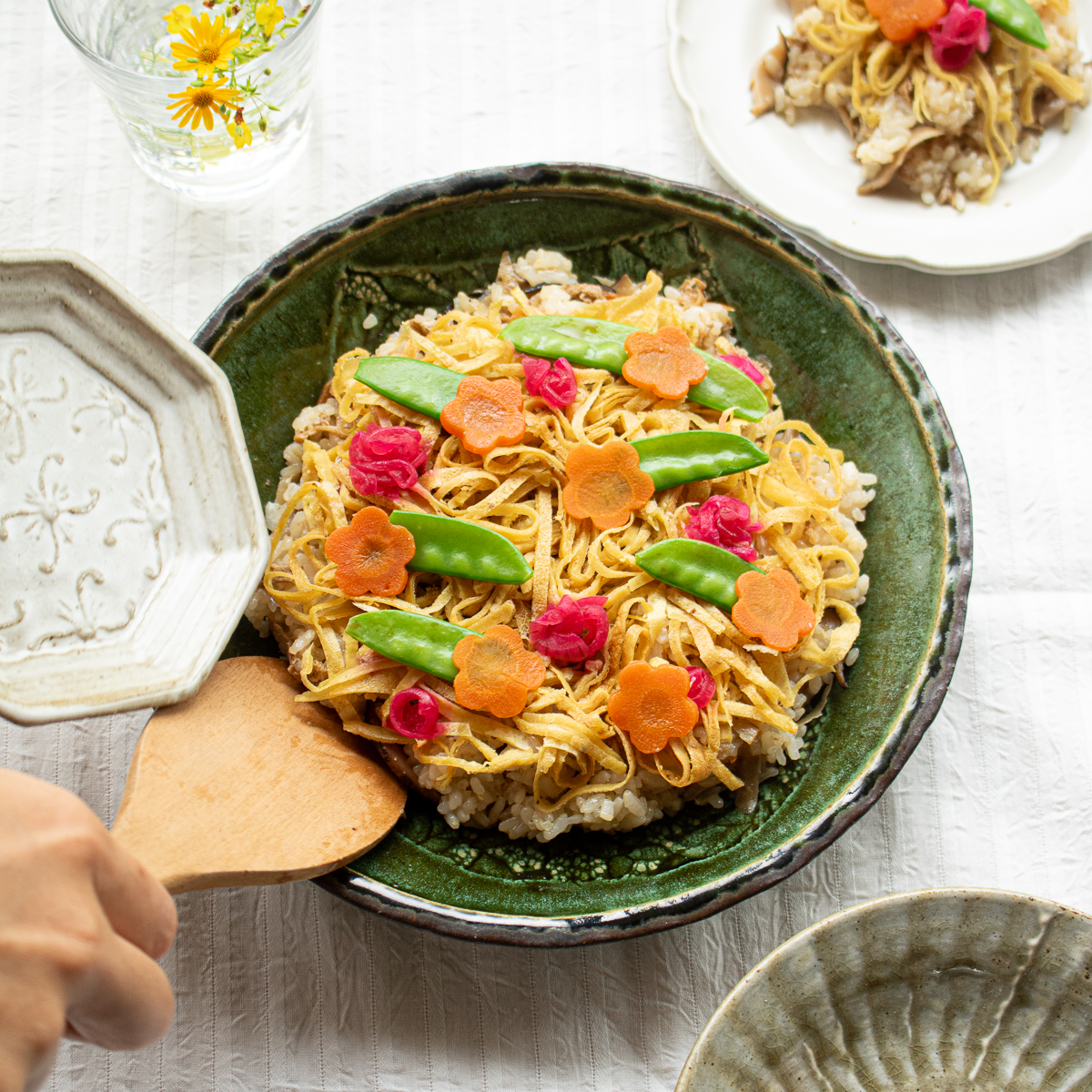
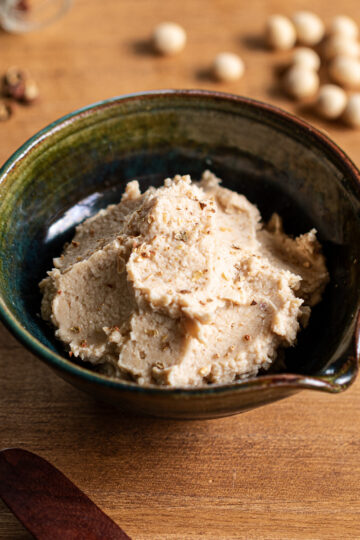



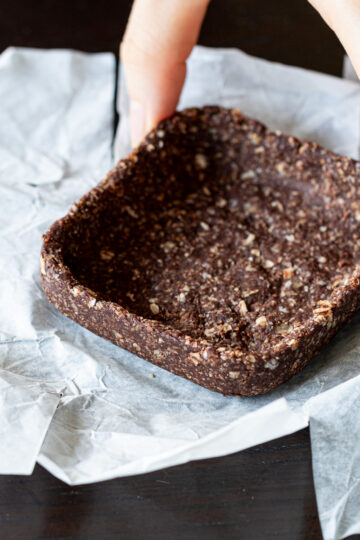
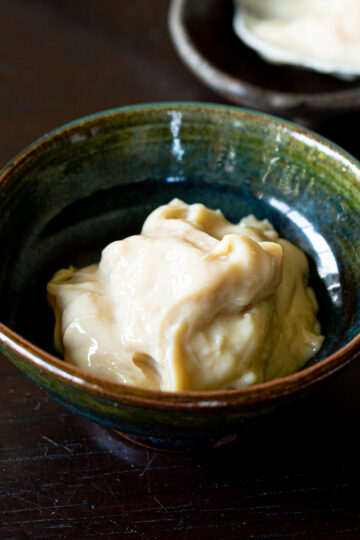
Comments
No Comments